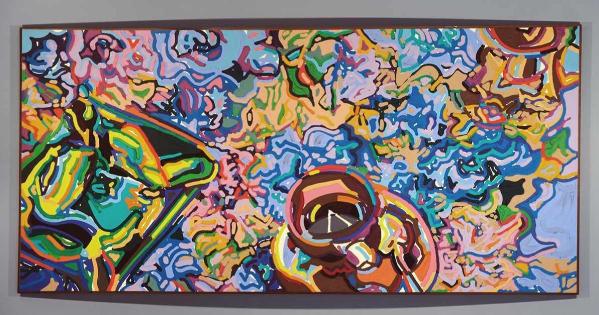AU Museum Reopens with Limited Hours, Timed and Ticketed Entry

Patrons and university community members can now experience three shows on display at the American University Museum at the Katzen Arts Center, as the museum welcomes visitors back and reopens June 1.
Visitors can reserve timed tickets for June. They will receive a health and safety form via email 24 hours prior to the visit. To enter the museum, visitors must agree to AU’s health and safety guidelines, including wearing a mask throughout the visit and maintaining physical distance.
Three exhibitions are on view:
Peace Corps at 60: Inside the Volunteer Experience brings the world home through the stories and objects of 30 individuals, representing a sampling of the 240,000 people who have volunteered their service. The exhibition, commemorating the 60th anniversary of the Peace Corps, spotlights cross-cultural understanding as nations and people around the world are undergoing major economic, social and migratory change. The exhibition invites viewers to understand what volunteers and host communities experience together. Objects on view include clothing, musical instruments and items used in food preparation in host countries.
In March 2020, the Peace Corps evacuated 7,300 volunteers from 61 countries. At a time when the global coronavirus pandemic and public confrontations with racism demand reflection and questioning of status quo, the agency has the opportunity to return volunteers to the field with a new sense of purpose. How will the Peace Corps, at 60, create positive change in our complex world? How should it address concerns around racial, economic, and asymmetrical power dynamics?
AU Museum Project Space and Museum of the Peace Corps Experience present this virtual exhibition to commemorate the Peace Corps’ 60 years of advancing friendship with foreign nations and promoting peace. Virtual Exhibit Opening: 7 p.m., March 3. Peace Corps’ 60th Anniversary Celebration: Introducing Museum of the Peace Corps Experience.
Raya Bodnarchuk: This is a True Picture of How it Was exhibits 1,926 works of gouache and ink paintings shown together for the first time. Through her long career, Bodnarchuk has never wavered in the pursuit of her craft or commitment to mentoring the next generation of artists. Best known for her sculpture, collage and silkscreens, this exhibit began as advice to her students to “Do something you love every day” and evolved into a brilliant chronicle of six years of her life beginning in 2013 and concluding in 2019. Presented by the Alper Initiative for Washington Art.
The Long Sixties: Washington Paintings in the Watkins and Corcoran Legacy Collections, 1957-1982 is a survey of paintings by Washington artists that tells the story of political engagement (or lack thereof) in the arts during the “long” 1960s. Curated by AU Museum Director and Curator Jack Rasmussen, the exhibit contains selected paintings that draw upon memories of what Rasmussen calls “a formative time” in his life. The narrative addresses the history of systemic racism and sexism in the arts, and its enduring impact on the art shown in museums today. It also emphasizes the need for politically engaged art through the present day.
“My perspective includes the acknowledgement of persistent, systemic gender and racial injustice, bias, and violence that was present in the ‘50s, laid bare in the ‘60s, and continues to the present day,” Rasmussen said. “It is clear to me that the defining characteristic of most white mainstream art made between 1957 and 1982 in Washington was an adherence to aesthetic and commercial constraints that encouraged artists to remain silent when their voices are most needed. What pushback there was against this tendency was led by Black and women artists, whose work has been systematically underrepresented in the collections of Washington museums.”
The paintings are selected from the museum’s collection of works in its Corcoran Legacy Collection and Watkins Collection, both of which contain exceptional works by regional Washington, D.C. artists. Also on view are selected borrowed works that present some of the many artists too often omitted in museum collections.
For visitors who prefer to experience the exhibits virtually, they can be viewed online.